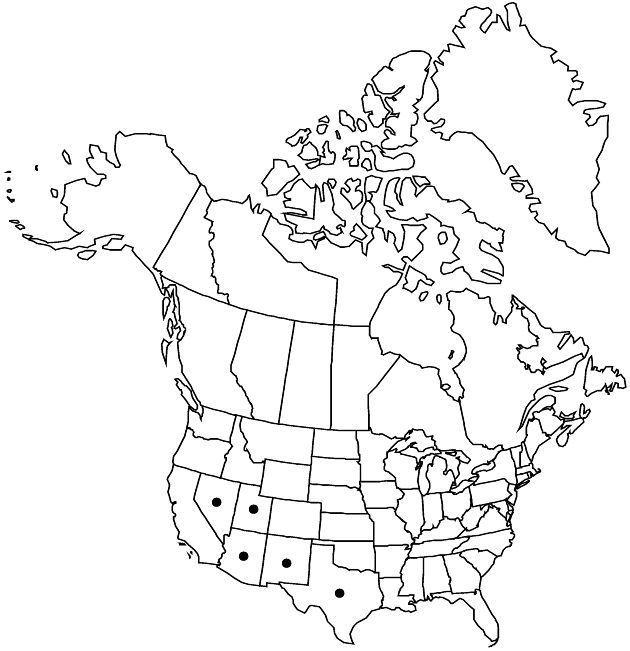Heterotheca fulcrata var. arizonica
Brittonia 39: 380, fig. 3. 1987.
Stems sparsely to moderate hispido-strigose, moderately stipitate-glandular. Distal cauline leaf blades sessile, linear-ovate to linear-lanceolate, 12–22 × 3.8–8 mm, margins with few long hispido-strigose cilia, faces sparsely to moderately hispido-strigose, moderately stipitate-glandular. Subtending bracts few, leaflike, not well differentiated from distalmost leaves and peduncle bracts. Involucres 5.7–8.4 mm. Phyllaries narrowly triangular-lanceolate, faces sparsely strigose, densely stipitate-glandular. Ray laminae usually 7.3–11 mm (averaging 9.6 mm). Cypsela faces sparsely strigose. 2n = 18.
Phenology: Flowering Jul–Oct(–Nov).
Habitat: Exposed, rocky embankments, cracks of rock outcrops, oak-pine woodlands
Elevation: 800–2400 m
Distribution

Ariz., Nev., N.Mex., Tex., Utah, n Mexico.
Discussion
Variety arizonica grows in Arizona, southwestern New Mexico, southern Nevada, and is scattered in the mountains of trans-Pecos Texas (into Mexico). It is a low-elevation race of the species, distinguished by its small, usually linear-ovate to linear-lanceolate, more stipitate-glandular leaves. The leaflike bracts subtending the heads tend to be few and small. The variety is similar to xeric, more glandular forms of Heterotheca villosa var. scabra, and can be confused with less pedunculate individuals of H. viscida, especially in Texas, where plants of var. arizonica have indument features approaching var. senilis on the one hand and var. fulcrata on the other. In Texas, some plants of var. arizonica with long, linear-oblanceolate bracts subtending the heads and narrow leaves are similar in appearance to some H. stenophylla var. stenophylla. J. C. Semple (1996) noted the occurrence of an atypical plant from northcentral Utah (campground, Mount Nebo) that was probably introduced and ephemeral.
Selected References
None.